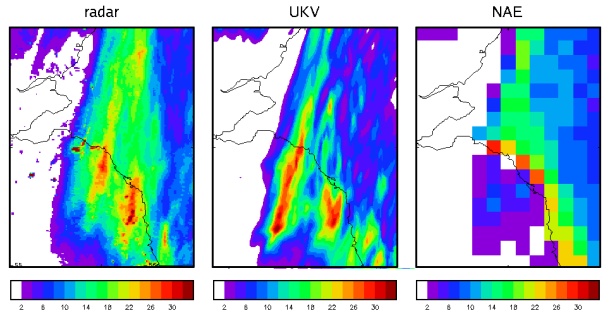MPs: Met Office needs more powerful supercomputer

MPs are calling for the Met Office to get a dramatically more powerful supercomputer, so it can offer better weather predictions to save lives and provide more accurate weather forecasts.
The Met Office already has the capability to offer better climate models and weather forecasting, but does not have the supercomputing power to run these models, Science and Technology Committee MPs wrote in the Snecience in the Met Office Report, published on Tuesday.
"It is of great concern to us that scientific advances in weather forecasting and the associated public benefits — particularly in regard to severe weather warnings — are being held back by insufficient computing capacity," Andrew Miller, chair of the committee, said in a statement. "We recognise that there are concerns about affordability, but a new supercomputer for the Met Office could deliver as much as a 10-to-one return on investment."
Consequently, the committee has called on the Department for Business, Innovation and Skills (BIS) to put together a formal business case on developing the Met Office's supercomputing capability within the next six months, rather than the 18 months currently timetabled.
"The science is ready and waiting. We know we have science; we understand; we have models ready and waiting to roll out, and we are testing them," Julia Slingo, the Met Office's chief scientist, said in oral evidence given to the committee. "Investment now will give a very rapid return on that in terms of the economic value to the UK and its interests nationally and internationally."
At the moment, the Met Office is in the process of upgrading an IBM Power7-based supercomputer to give it nearly a petaflop of peak processing performance. However, the agency actually needs a system twice as powerful as that to run top-level models, the committee heard. More computational power would let the Met Office use models with a higher level of detail, yielding more accurate forecasts for more specific areas of the UK.
The enhanced supercomputer, which would have a peak performance of almost two petaflops, would cost £42m, paid over three years. These costs include equipment, power, maintenance charges and staff costs for designing models to make use of the more powerful hardware, the committee wrote.
Climate models
Climate models work by splitting the world up into a series of distinct blocks. Just as the fineness of detail of a map is determined by its scale, the effectiveness of a climate model comes from the resolution at which it models the world.

At the moment, the Met Office uses the 'UKV' climate model, which breaks the entire Earth, excluding the UK, into 25km square chunks. Image credit: Met Office
At the moment, the Met Office uses the 'UKV' model, which breaks the entire Earth, excluding the UK, into 25km square chunks. That is then fed into a higher-resolution map of the UK that deals in models 4km square or 1.5km square.
"The greater resolution you can do, the more accurate forecasts can be, because they pick up smaller changes in the atmosphere," Dan Williams, a Met Office spokesman, told ZDNet UK. "If you go back to the storm that we had in Scotland in December, where we saw 165mph gusts, we were able to warn about the intensity of that storm, and so the authorities there, the government and the police, took the decision to close schools that day to prevent the risk to life."
"The more accuracy we can give is really important for safeguarding infrastructure and saving lives," Williams added.
The Met Office has looked into pooling the resources from supercomputers in several countries to generate forecasts via a distributed computing model. However, this is not feasible for national forecasts, due to the time constraints and the difficulty of designing a massively parallel software model, the MPs heard.
"[Distributed computing] has been tried, and we cannot get either the efficiency, in particular, or the timeliness," Slingo said. She noted that forecasting requires a huge amount of memory per socket, extremely fast interconnects between processors and very high bandwidth for getting data in and out of the supercomputer.
"Those sorts of systems are not typical of the sorts of architectures that are around and available on group computing or other set-ups like that," she said. "That is the conclusion that we have come to, but it is one that all the major weather and climate modelling centres around the world have also come to."
Get the latest technology news and analysis, blogs and reviews delivered directly to your inbox with ZDNet UK's newsletters.